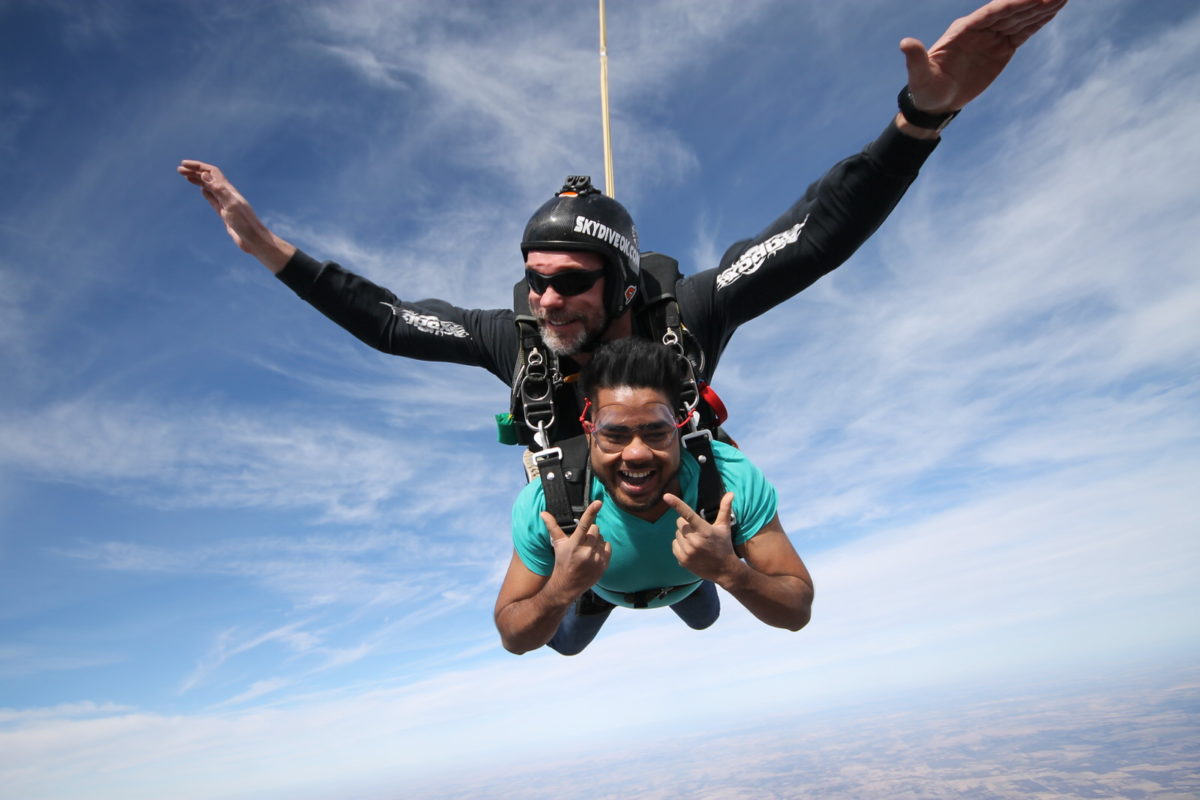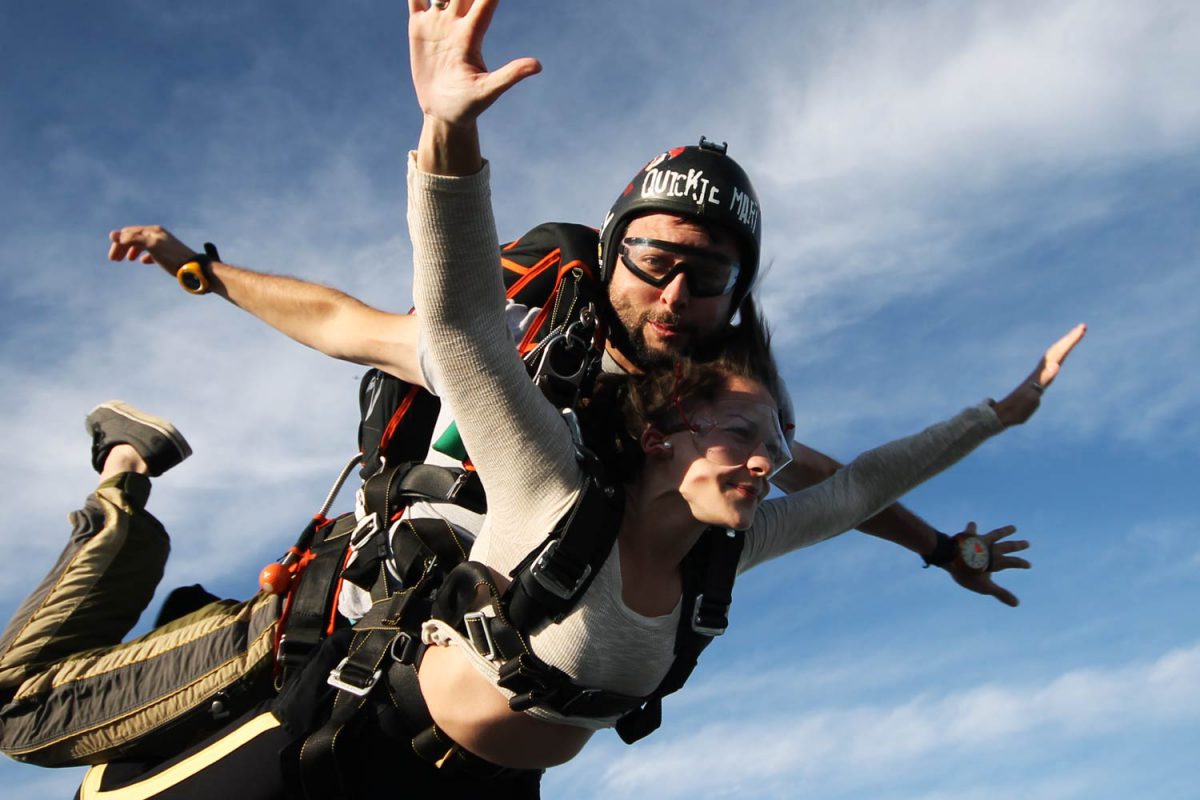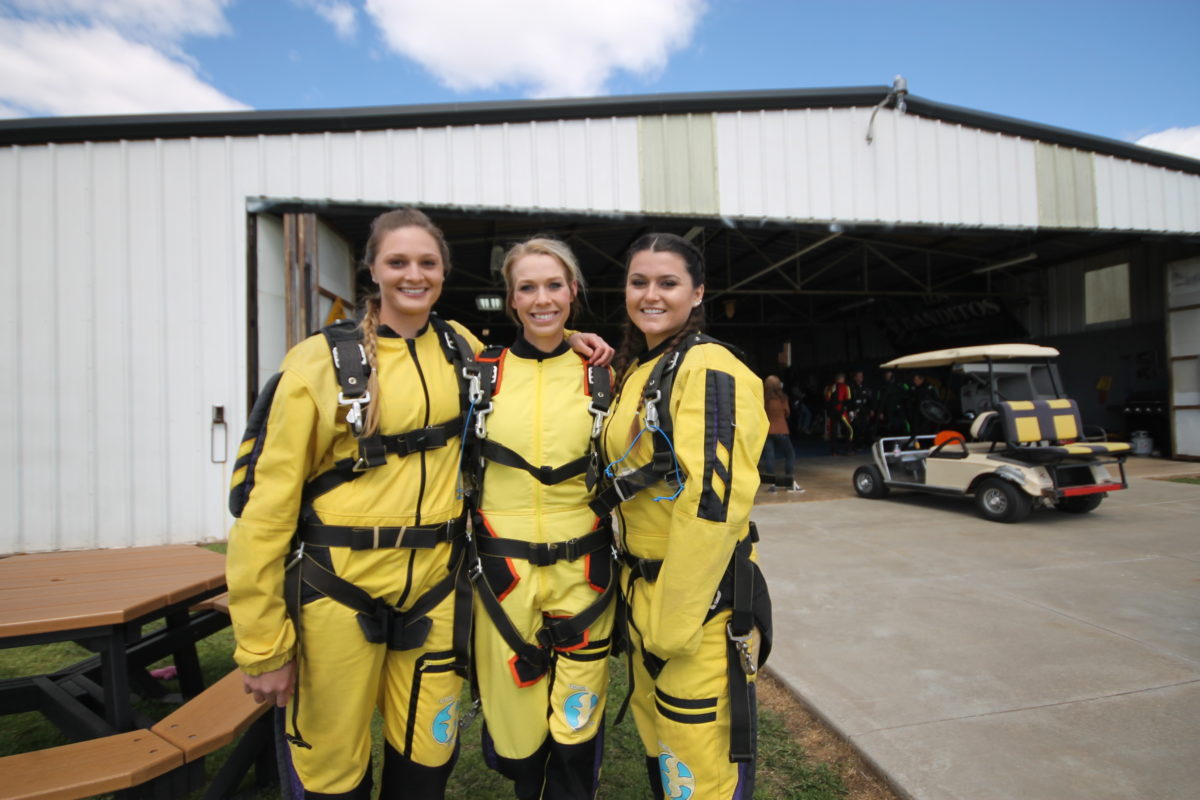5 Tips for Overcoming Your Fear of Heights
Thursday, August 31, 2023
Whether your fear of skydiving is rooted in your fear of heights or for some other reason, know that you’re not alone in that feeling. Feeling afraid of heights or, specifically, a skydiving fear of heights, is completely normal. It’s actually a good thing – it means you’re a fully functioning human! Being scared of heights is so common that it has a name: acrophobia. Having fear means you can empower yourself to conquer your fear and experience real growth.
The big question remains; should I go skydiving if I’m afraid of heights? Absolutely, skydiving has (and continues) to help many individuals get over their fear of heights. It’s even a common fear skydivers with significant experience have! Here are our top 5 tips for how to overcome your fear of heights.

1. Understand Your Fear
Sweaty palms, heart racing, lightheadedness … These are all signs and symptoms of fear and anxiety welling up inside of you. When this happens, ask yourself some questions:
- What is causing this fearful feeling?
- What’s the worst thing that can happen?
- How realistic is it that that worst thing will happen?
Identifying the root of your fear, forcing yourself to acknowledge what could happen, and questioning whether your fear is rational or irrational is healthy. You can say “NO” to your fear; you can take the power back, release the fear, and overcome it.
Fear, in itself, isn’t actually legitimate – it’s something you create in your mind and feed, even when you are in a fairly safe situation. By knowing what it is that scares you and becoming aware of how it causes your body to react, you have a better chance at combating your fears and changing your perspective in a more logical way.
2. Take Baby Steps

Some people prefer jumping right in instead of getting their feet wet first. For others, starting small works best. There are no rules to overcoming your fear, it is whatever works best for you!
You don’t have to go from ground level straight to 14,000 feet or even 50 feet for that matter. Practice some exposure therapy by intentionally triggering your fear of heights. Maybe that’s climbing a ladder or hiking to the top of a hill; maybe it’s taking the elevator to the top floor or crossing a high bridge. The more you try to cope with your fear of heights, the more comfortable you’ll get with heights. Regardless of your technique, it’s best to push through at your own pace. You’ve got this!
3. Visualize
Visualizing the situation in advance can help normalize the experience and prepare your mind and body for the real thing. Start by watching some tandem skydiving videos and put yourself in their shoes. Notice how unbelievably happy they look throughout freefall, canopy flight, and the landing! This might even help motivate you to do it yourself and give you the confidence you need: if they can do it, so can you!
Picture yourself being on the plane surrounded by awesome people riding up to altitude … being in the door of the airplane … feeling the freedom as you leap into the sky … freefalling and blissfully floating under the parachute back down to earth. Think about how you’ll feel in those moments and especially focus on how awesome you’ll feel after the jump, knowing that you actually did it! You accomplished the impossible: you’re a force!!
4. Knowledge is Power
Knowledge is power in any case, especially in the case of jumping out of a perfectly good airplane. If your fear is trying to ruin your fun, try to manifest your feeling of fear into excitement. When those symptoms of fear rear their ugly head, combat them with logic. Tell yourself:
- Skydiving safety statistics are on your side.
For 10 years, there’s been an average of 1 fatality per 500,000 tandem skydiving jumps. - Skydiving is a safety-first culture.
Skydivers, especially skydiving instructors, are very serious about safety. - There are strict governing bodies over the skydiving industry.
United States Parachute Association (USPA) and Federal Aviation Administration (FAA). - Skydiving instructors are highly-trained, experienced and rated.
Tandem instructors have a minimum of 500 jumps, a D License, and three years in the sport. - You’re jumping with two parachutes: a main parachute and a back-up reserve parachute.
The reserve is inspected and repacked by a certified FAA parachute rigger every 180 days. - Every tandem skydiving rig is equipped with an Automatic Activation Device (AAD).
The AAD automatically deploys the parachute if the instructor is unable to do so.
Knowing these facts can help you stay calm and remind yourself that you’re in good hands!
5. Ask for Support

Our instructors have loads of experience – you won’t be the first person they’ve taken up who is scared of skydiving! We urge you to lean into your instructor and allow them to help you feel more comfortable, confident, and empowered. They aren’t half-witted adrenaline-junkies, tandem instructors are open-minded, thoughtful professionals who have strategies to help every guest have an awesome skydiving experience.
Better yet, if you’re feeling afraid of skydiving, bring friends or family along with you. Their presence alone can bring you a sense of comfort and help you stay motivated while on your skydiving journey. And if they decide to jump too, you might qualify for a group discount!
Skydiving may not be your ‘fear of heights cure’, but it has helped a whole lot of people change their relationship with their fear. We hope you’ll push the boundaries of your fear and reap all of the amazing benefits that skydiving has to offer.
Ready to reach new heights and soar? Take the first step by booking your skydive with Oklahoma Skydiving Center! Blue skies.
Copyright © 2024, Oklahoma Skydiving Center, All Rights Reserved.
DropZone Web Design & Marketing by Beyond Marketing, LLC





